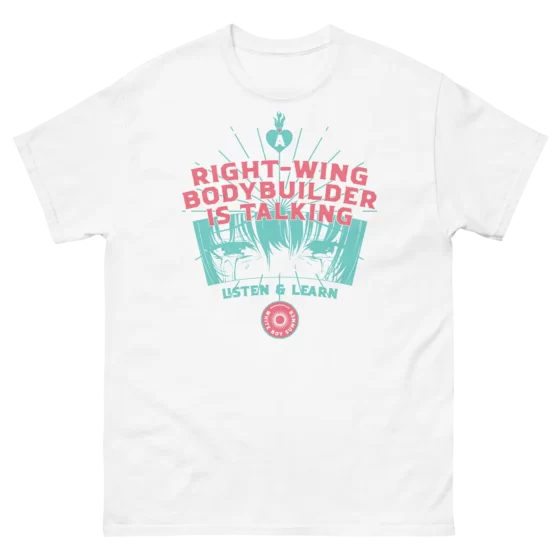Conan the Culture Hero
In the century since Robert E. Howard’s first published Conan story, the Cimmerian has claimed a thread in the tapestry of western myth, becoming a culture hero alongside Robin Hood or King Arthur. Nobody asks, “Conan!? Who’s that?”. Everyone knows Conan, even if only by osmosis. Generations have grown up knowing his image and legend; our own noble savage.
Conan entered myth in a number of vehicles: long comic runs, feature films and television programs, video games, action figures, and something like sixty novels by fifteen different authors. But the original stories are surprisingly few. Howard only ever wrote about 360,000 words of Conan tales, including a single novel (Hour of the Dragon). That word count is roughly in line with a single book of George Martin’s Song of Ice and Fire series. Nevertheless, from only those few stories – many of them only fragmentary – the Cimmerian has achieved persistent popularity and become a byword for barbarism. So much so that Amazon canceled its plans for a live-action Conan series over concerns about the “toxic masculinity” inherent in the stories and characters. Conan is the big man on campus: he presents the same problem for Amazon that he does for the priests of Anu.
Why does Conan punch so far above his apparent weight? Perhaps because our scales aren’t calibrated. Conan never really caught the interest of the Academy. Even today, Howard’s work is often overlooked by the serious critics attempting to digest other early pulp or weird writers like Lovecraft, Ashton-Smith, Blackwood, and Machen. Many readers fall into the trap of shallow reading, coming to think of Conan as a simple amalgamation of muscles, swords, sorcerers, wenches, and monsters. Those things are very cool, but there’s a lot more going on under the hood. After all, the big man is still on campus while post-Howard characters like Thongor, Brak, Imaro, Elak, and Kothar are all forgotten.
Though Howard’s Conan stories seem like straightforward pulp fantasy, under the hood there’s a robust engine for criticizing the spirit of civilizations, and a vision for resolving the evils that flow from their corruption. Howard is not a fabulist at all. Howard is so grounded, so based in observation and in history, that he becomes prophetic. People think they read Conan for the simple escapism, but it’s the opposite: they actually read him for the verisimilitude. Those who haven’t lost the gift of true sight are beginning to understand in their bones what life was like in the Hyborian Age.
Imagine yourself in the Hyborian Age. Use your mastery of hypothetical thought. How would you feel if you had been born in Koth or Stygia? Consider the sorcerers, the monsters, and the wenches. Why did Howard choose these images as the texture for his work? Where do they come from? What would it feel like to live in that age?
The Conan stories are always drenched in the perfume of a lurid and sensual mysticism. Life is the bellum omnium contra omnes (war of all against all). Men curse with the names of gods they may one day have the misfortune to meet. Powerful cults funded by the elite, using the gutter castes as their agents, operate freely throughout Hyborian civilization. Sorcerers and witches employ terrifying, often sexual, practices and rituals to gain power in public and in private, exploiting temple maidens and virgin sacrifices and summoning monsters. Some will have already intuited my argument, but I will pull the lines apart to read between them.
The cult motif is very consistent in the Hyborian setting. This patchwork of cults within a society of sensual mysticism is where Conan gets a lot of the girls he kisses, slaps, spanks, throws over his shoulder, etc. In The Black Colossus the sorcerer Natohk seeks to exploit Princess Yasmela, promising her a profane union in the service of power. In The Slithering Shadow, Thalis of Stygia tries to sacrifice Conan’s girl Natala to the Chthonic god of the ancient city. In The Devil In Iron, the captive Nemedian highborn girl Octavia is first a piece of bait for Conan, then promised a fate worse than death by the necromancer Khosatral Khel. Each is an example of the erotic mystery cult’s influence on life in Hyboria.
A beautiful woman does not end up on a sacrificial altar by accident. It takes organizational and institutional clout. You have to be a heavy hitter to waste virgins like Thulsa Doom. You need people giving money, building citadels, scouting victims, providing food, selling their swords, etc. A lot of people are involved and invested in the dark rituals of this civilization. And these practices don’t just vanish without effort either. They permeate the culture and become difficult to excise. Empires like Carthage and Tenochtitlan crumbled under the curse of similar practices rather than give them up. Most of the Hyborian kingdoms and peoples live amid this grim chaos. In one sense, this influence of cults and erotic mysticism comes to define the pre-Christian Hyborian Age.
What Howard knew is that they also define our age. Look at the world we live in through Conan’s eyes. How would he view the patterns and events we see every day?
The Dilators and Autogynephiles are the most obvious: ritual eunuchs and catamites in service to the priests of a certain cult. I know we don’t see such things specifically in Howard’s work, but an attentive reader can spot them between the lines, and assume Howard blurs his lens to spare his audience. He predicts them nevertheless. For example, the Conan stories mention the cult of Derketo several times, most notably in The Slithering Shadow, where Thalis, barely-clothed, whip in hand, tells us:
“They will put her through paces she never dreamed of! She is too soft to endure what I have thrived on. I am a daughter of Luxur, and before I had known fifteen summers I had been led through the temples of Derketo, the dusky goddess, and had been initiated into the mysteries.”
Derketo is not a creation of Howard’s. She was a fertility goddess worshiped classically in the Levant as both Derceto and Atargatis. Her priestly practices included rituals wherein young men would castrate themselves and begin living as women at the temple, including performing womens’ work and cross-dressing. An early historian tells us:
“In Syria and in Urhâi the men used to castrate themselves in honor of [Atargatis]. But when King Abgar became a believer, he commanded that anyone who emasculated himself should have a hand cut off. And from that day to the present no one in Urhâi emasculates himself anymore”.
This, of course, sounds all too familiar to us.
When we think in Hyborian terms, the lines between the Hyborian Age and our own begin to blur and the verisimilitude of the Conan stories becomes clear. Consider the cult whose followers practice child sacrifice. Its members are everywhere among the desperate poor, the thoughtless middle, and the avaricious elite. Conversely, among the death cults that draw from those at their lowest point, others focus on the ritualized sacrifice of adults. You can easily imagine a story of Conan rescuing a pretty maid from the death-worshiping cultists of Stygia. So too can you easily imagine me, Conan Esquire, rescuing a pretty MAID from the death-worshiping cultists of Canada. You may hate these disgusting practices, but you can’t do much, because the cult is very powerful with so many people involved in it at some level. So life goes on in the diverse and vibrant Zamoran cities of Shadizar and San Francisco.
Other cults worship the primitive monsters and unsettling hybrids that claim their own unavoidable place in the mind of the people, whether the people are victims of savage violence or just hear alarming stories and worry for the safety of their families. These dysgenic breeds lurk in the shadows on the fringes of civilization as the pawns of the avaricious cults, yet loyal only to themselves, just as in The Jewels of Gwahlur, where dead sorcerer Bit-Yakin’s monstrous servants are described as “hairy, man-like, yet hideously human; but their eyes were alive, cold sparks of gray icy fire.” Howard describes one further:
“[It was] no ape, neither was it a man. It was some shambling horror spawned in the mysterious, nameless jungles of the south, where strange life teemed in the reeking rot without the dominance of man, and drums thundered in temples that had never known the tread of a human foot.”
Art, especially important civic sculptural art, links the long ages and spiritual inches between our modern era and ancient Hyboria, forgotten but never dead. In civic art we see the elevation of archaic goddesses without even the pretense of disguise. The statue of a horned and winged goddess in gold, entitled “Witness”, now stands triumphantly atop the New York City Courthouse, while a larger copy stands in nearby Madison Square Park. It is impossible to miss the parallels to Istar, whose cult practiced sexual rites with temple prostitutes and whose myth often focused on usurping the realms of other gods. In Howard’s work, as in our own age of decaying civilization, Istar appears as Ishtar, largely unchanged in name and aspect. Thus, in The Black Colossus we learn:
“The Kothians had long since abandoned the worship of Mitra, forgetting the attributes of the universal Hyborian god . . . Ishtar was much to be feared, and all the gods of Koth. Kothian culture and religion had suffered from a subtle admixture of Shemite and Stygian strains. The simple ways of the Hyborians had become modified to a large extent by the sensual, luxurious, yet despotic habits of the East.”
Howard foresaw the depths of our modern state as we began our slide in earnest. He knew, spiritually, the nature of the world that lay just underneath ours, and to which, consequentially and mercifully, we would eventually return. He wrote about it. His decision to set Conan on ancient earth instead of an invented realm is no accident. We are re-entering the Hyborian Age.
But there are silver linings here. Among the most important thematic conflicts the Conan stories consistently set up is that of a lonely glimmer of vitality opposing the broad sweep of a deeply corrupt, effete, moribund world-soul rooted in weak kings, old men, monsters and whores. Conan castigates those so-called elites whose position isn’t truly earned, whose spirit is not “nailed to their spines”. It venerates instead those rare few who win their thrones by blood and sweat and by Crom, who will not sell. All the while, Conan also sifts the mindless lower castes for hints of honor and vitality, however alien, amid the filth.
This conflict isn’t equally clear everywhere all the time. Races rise and fall. The Hyborian Age lasts a long time. Some races do better than others at preserving the divine essence, while everywhere the old wells of nobility run dry and new are being dug. But it’s Howard’s complete, visceral, spiritual understanding of his thematic conflict that helps give his archetypal arrangements of plot and character such insistent and thrilling relatability. You recognize this world and its people from your blood memories.
Conan gives daring support for both the strictest hierarchies (in merit and in rank) and for an egalitarian acknowledgment that the sea of humanity can at any time heave forth a great vital champion to leave a blood wake behind him. Conan finds friends, enemies, and lovers from every class of society, from kings to slaves. He simply shrugs at the apparent contradiction, and invites the philosophers to concern themselves with the problem, if they wish.
There is electricity in this impossible tension between hierarchy and egalitarianism, between vital power and stagnant power, between the solar and chthonic gods. Together with Howard’s focus on the relationship between will and vitality, this lends the stories some of that effervescent quality which lifts the spirit and inflames the soul. We see Conan as a man embodying virtue as a function of his own will and no other’s.
Some things get repeated over and over so much nobody stops to ask if they’re even right. The idea that Conan is a flat character in some simple pulp fantasy stories is one of these. It is the opposite. Conan may not have character arcs in the sense we expect from modern writing, but he is nevertheless startlingly present and potent. If we say Howardian less often than we say Lovecraftian, it’s because the former is too ambitious and captures too much meaning for casual use. And Howard encodes all this into a single character. Conan the Cimmerian implies this entire prophetic warning about the modern state and, conversely, the way a man can conquer it (if not transcend it). He is written as the singular symbol of Howard’s great “j’accuse” to encroaching modernity: Conan is judge, jury – and executioner.
And this is a powerful symbol indeed. Despite near-complete disinterest from the so-called keepers of culture, Conan has become a culture hero. He’s become Lindy. This is evidence of the potency of Howard’s great thesis, and speaks to the serious merit of Howard’s work. Conan is overlooked. But that’s just how he’d like it.
































